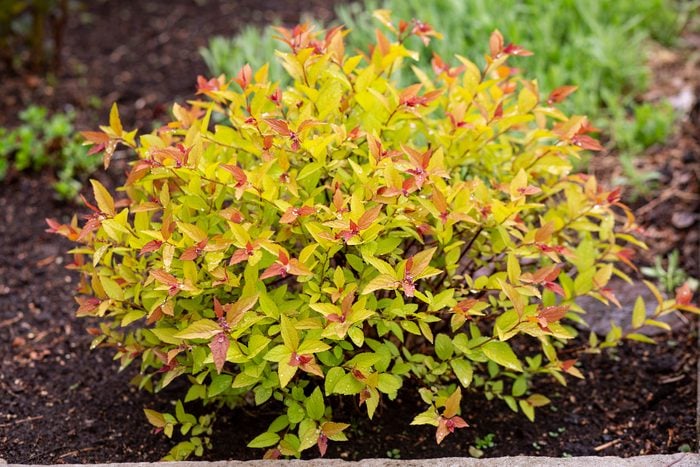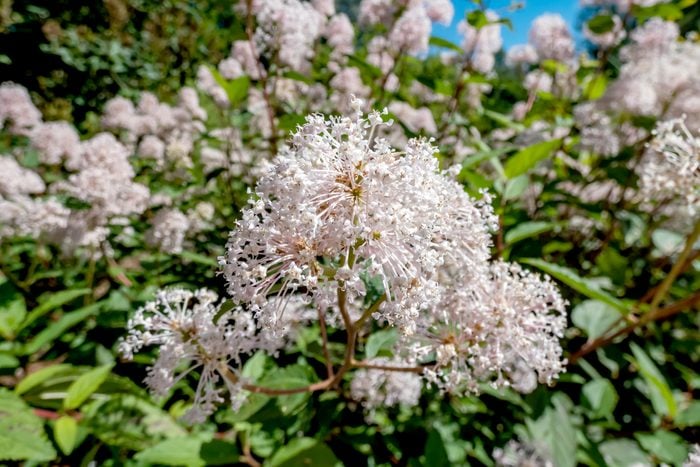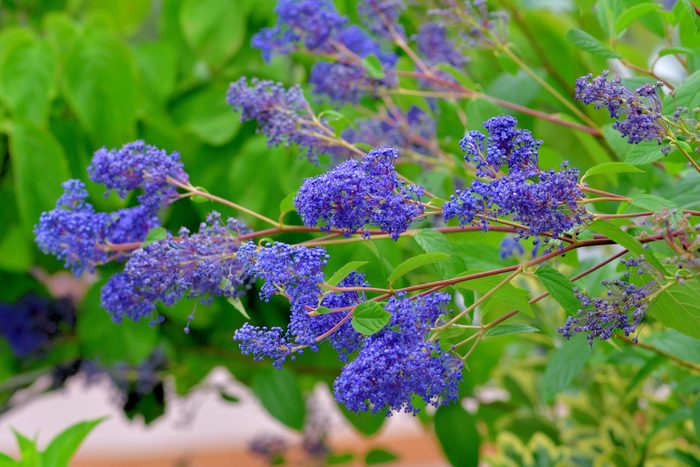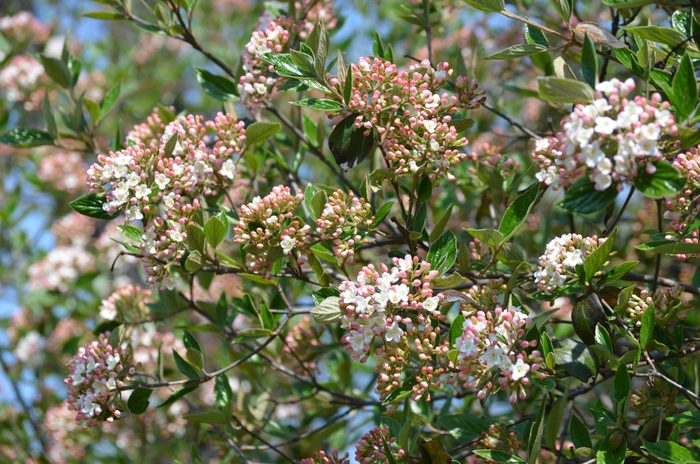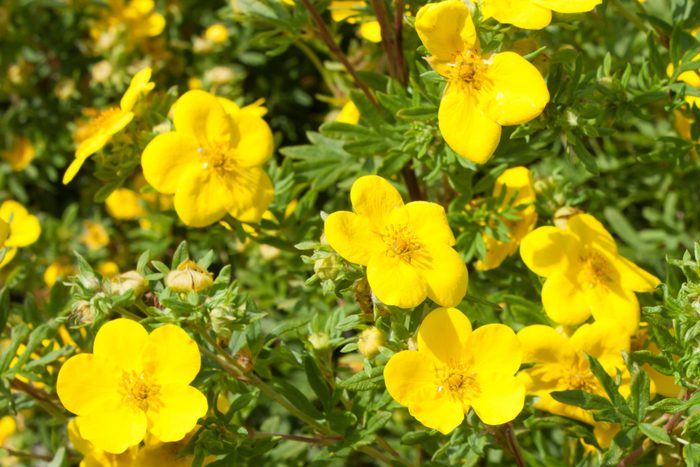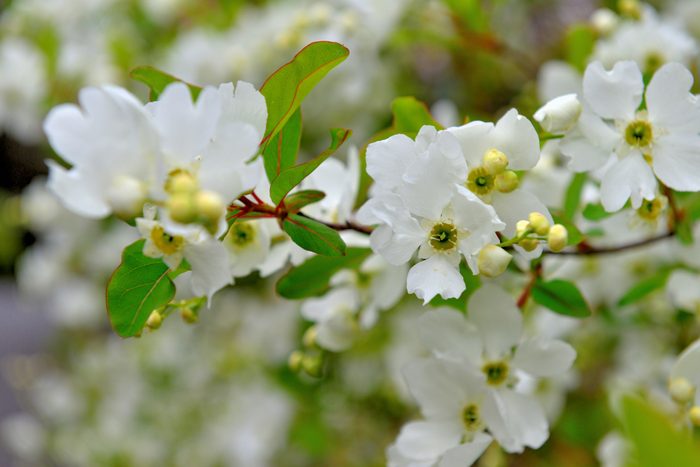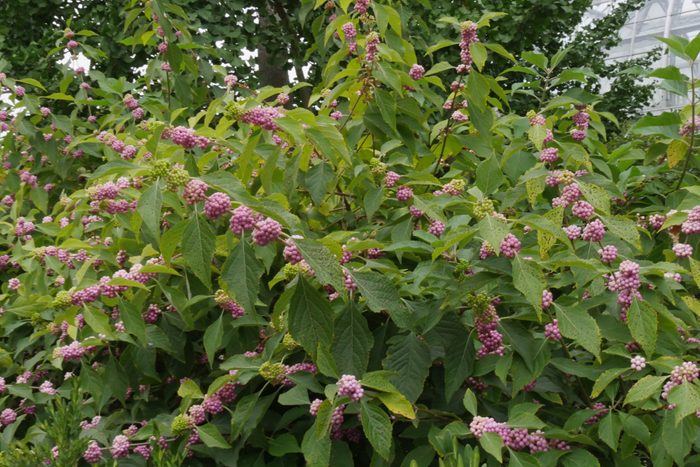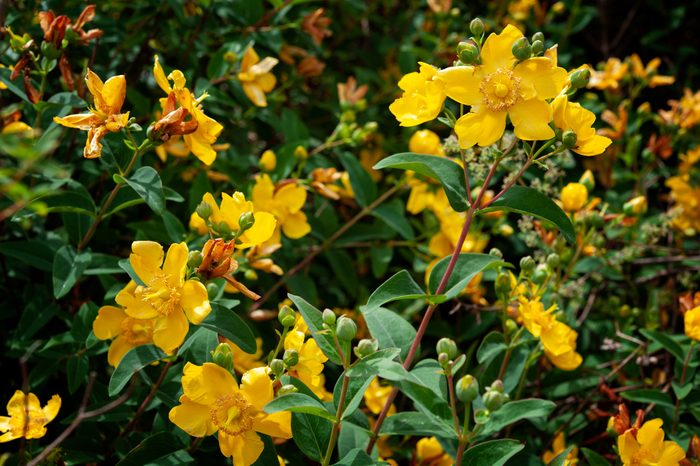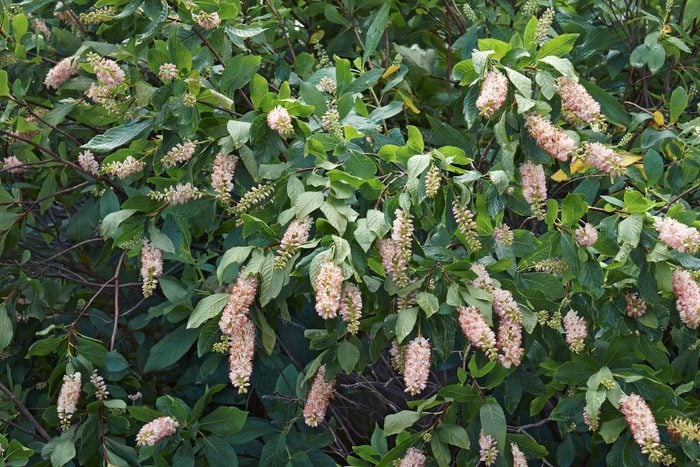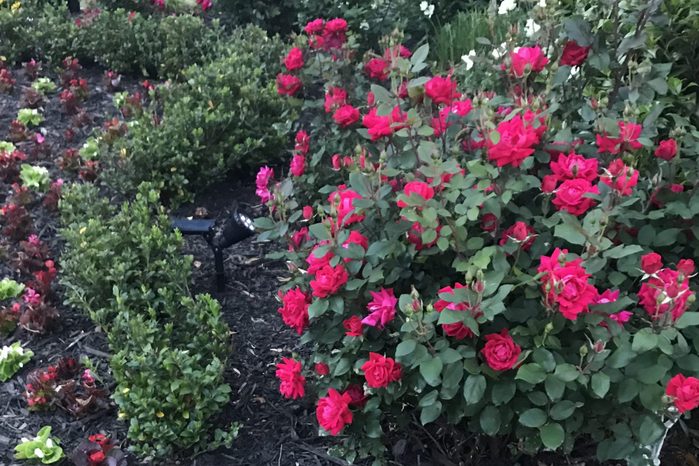Spirea ‘Goldmound’
There are many varieties of spirea, a full sun standout. Goldmound Spirea, Spirea japonica ‘Goldmound,’ often grown for its foliage, is hardy in U.S. Department of Agriculture Plant Hardiness Zones 3 through 8.
As its name suggests, new foliage in spring appears yellowish green. Leaves turn a brighter green in summer before changing again in fall to shades of red and orange.
Goldmound is a smaller shrub, one to two feet tall and two to three feet wide. Small pink clusters of flowers appear in early summer. The flowers form on new growth so you can prune this shrub back in late winter before it breaks dormancy. Some gardeners also cut off spent blooms so they won’t produce seeds and become invasive.
Forsythia
Almost everyone recognizes the bright yellow blooms of forsythia shrubs. Varieties range in size from two to three feet tall and wide to well more than five feet tall. Most are hardy in USDA Zones 5 through 8, although with some searching you can find varieties like ‘Citrus Swizzle‘ that grow in Zone 4.
Besides the bright yellow flowers that often appear in mid-March or earlier, forsythia shrubs feature bright green foliage that changes to maroon and bronze in fall.
To ensure the best floral display, buy a Forsythia variety fitting the mature size you want and let it grow to its natural size and shape.
New Jersey Tea
New Jersey Tea, Ceanothus americanus, is native to much of the Eastern U.S. Its common name derives from its use as a tea substitute during the American Revolution.
Hardy in Zones 6 through 9, it can be drought tolerant once established. White flowers appear in mid-spring, followed by blackish-blue fruit in summer. The foliage remains green and glossy through the growing season. It grows up to three to four feet tall and wide without pruning.
New Jersey Tea is a great native shrub for attracting pollinators. Birds like it, too. They can hide within its branches and eat the fruit in late summer.
Lilacs
Another commonly recognized shrub for full sun is the lilac, Syringa sp. Many types of lilacs are known for their highly scented spring flowers. Most are hardy in Zones 3 through 7.
Buy lilacs when they’re blooming so you get one that fits your garden. After planting, keep them watered through the summer until established. They should provide years of carefree flowers.
If you decide to prune your lilacs, do it right after they’ve flowered. If you prune later in summer or fall, you’re likely cutting off the flower buds for next year.
California Lilac
The California Lilac is a warmer-climate shrub native to the Western U.S. It grows in Zones 7 through 10, although some varieties are only hard in Zones 9 through 10.
These evergreen shrubs, in the plant genus Ceanothus, produce blue flowers in spring and early summer. These blooms look somewhat like the flowers on the lilacs grown in colder climates. They’re also large shrubs, often growing six to 12 feet tall and spreading nine to 12 feet wide.
California lilacs are also drought tolerant. When in flower, they attract bees, butterflies and other pollinators.
Korean Spice Viburnum
Among the many species of viburnum shrubs, Korean Spice Viburnum, Viburnum carlesii stands out for its highly scented flowers and smaller size. Hardy in Zones 5 through 9, its flowers appear as dark pink buds that open up to a reveal a soft pink color. It will top out at around five feet and five feet wide.
To enjoy its fragrant blooms, consider planting Korean Spice Viburnum where you can walk past it. It doesn’t need much pruning if you let it grow to its full size.
Potentilla ‘Goldfinger’
If you’ve struggled to find a small shrub that grows well in hot, dry, full-sun locations, consider Potentilla fruticosa ‘Goldfinger.’ This shrub grows three to four feet tall and wide and is especially hardy in Zones 2 through 7. It’s known for its bright yellow flowers that appear in early summer and continue until fall.
Once established, potentilla shrubs can tolerate drought. They also require almost no pruning. In late winter, cut older stems down to the ground to shape the shrubs if needed.
Pearl Bush
If you’ve ever seen a pearl bush, Exochorda sp., just before it flowers, you immediately know how it got its name. The flower buds resemble tiny white pearls before opening up in early April to reveal white blooms.
Hardy in Zones 4 through 8, pearl bush grows three to four feet tall and wide. Its branches tend to cascade down so plant it where they can spill over, like on a sloping bank.
If you’re happy with its natural size and shape, you won’t have to do much pruning. If you do want to prune it, remember it sets flower buds in the fall, so prune right after it finishes flowering.
Beautyberry
Beautyberry shrubs, Callicarpa sp., are grown for their berries, which appear in late summer and early fall in lilac-colored clusters along the stems.
When purchasing, choose a native or Asian beautyberry, or hybrid varieties, like ‘Pearl Glam.’ The latter, in Zones 5 through 8, will grow four to five feet tall and wide. In colder zones, beautyberry may die back a bit. Dead stems can be cut back to a live bud.
The native beautyberry, Callicarpa americana, is only hardy in Zones 6 through 10.
St. John’s Wort
Many people think of St. John’s Wort as an herb, but there are also small shrubs with this common name.
Hypericum frondosum ‘Sunburst,’ hardy in Zones 5 through 8, grows up to three feet tall and wide, with bright yellow flowers appearing in early summer. In warmer climates, it’s considered an evergreen. In colder climates, it will drop its blue-green leaves in fall. Although not all St. John’s Wort herbs and shrubs are native to North America, this particular one is.
After flowering, St. John’s Wort produces unique seed heads almost as interesting, although not as bright, as the flowers.
Summersweet
Summersweet, Clethra alnifolia is a sun-loving shrub native to North America. Specifically chosen varieties like Clethra alnifolia ‘Crystalina,’ sold as ‘Supertina,‘ begin flowering as summer begins in June.
This shrub, hardy in Zones 4 through 9, grows up to three feet tall and wide. As one might guess from its common name, the white blooms are highly scented. The green foliage turns to yellow in fall.
Prune only to shape it up; otherwise, leave it alone. Prune in early spring before the flower buds form. Summersweet also prefers moist soils, so mulch it and water as needed during dry spells.
Shrub Roses
Many gardeners think roses are for specialists, but many shrub roses are as easy to grow in full sun as any other shrub. Some of the most well-known are the Knock Outs.
Commonly hardy in Zones 5 through 9, they come in all shades of pink, red, white and even yellow. Some varieties are hardy in Zone 4, with others suitable for Zones 10 through 11.
Mulch after planting to keep them from drying out. Do any pruning early in the spring. These roses are considered “self-cleaning.” Leave them alone and they’ll flower all season long.

